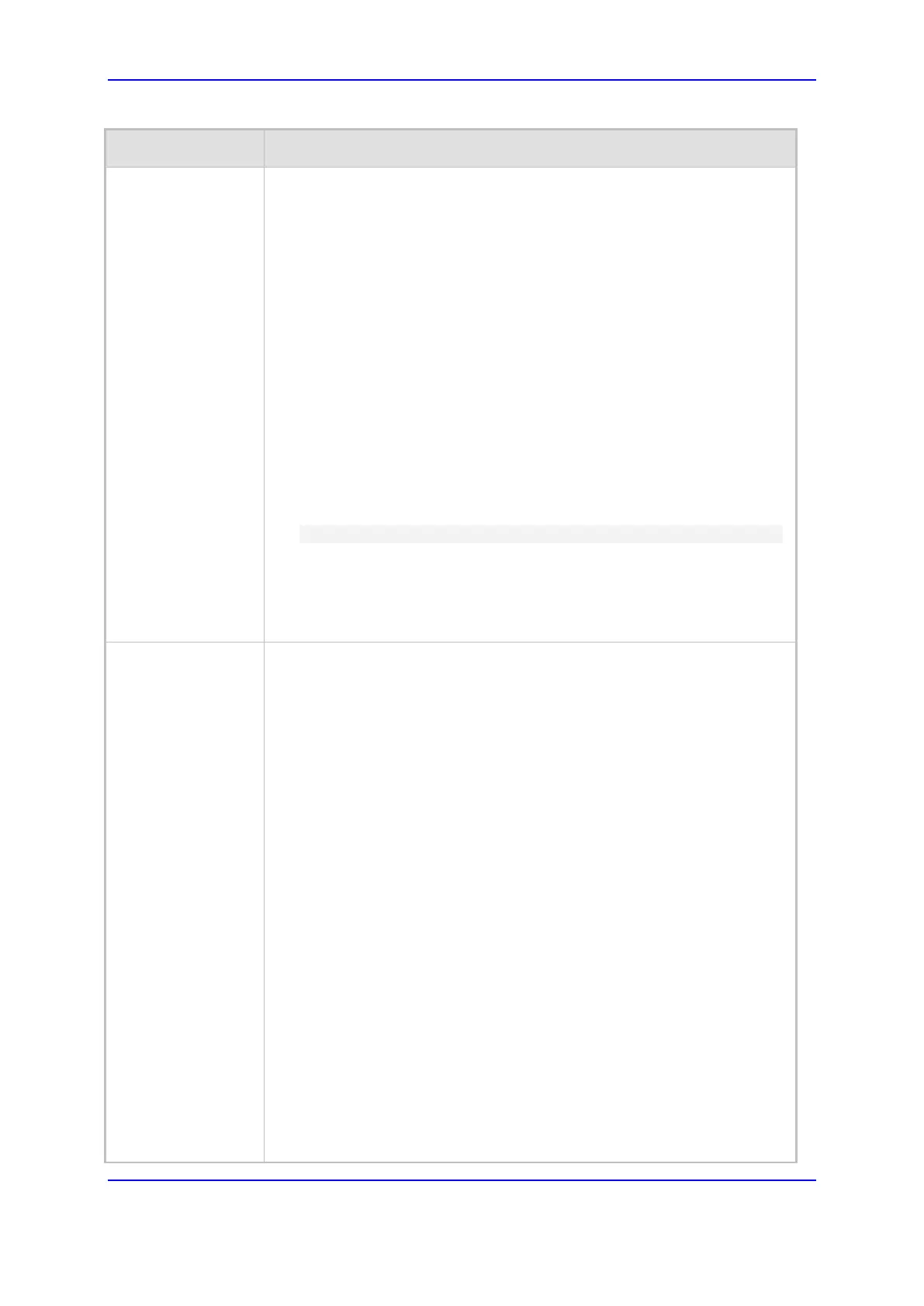Version 7.0 791 Mediant 3000
User's Manual 53. Syslog and Debug Recording
Parameter Description
[7] IP-to-Tel = Filters log according to an IP-to-Tel routing rule. For
configuring IP-to-Tel routing rules, see Configuring IP-to-Trunk Group
Routing Rules on page
505. Note: Applicable only to the Gateway
application.
[8] IP Group = Filters log according to an IP Group. For configuring IP
Groups, see ''Configuring IP Groups'' on page 343.
[9] SRD = Filters log according to an SRD. For configuring SRDs, see
Configuring SRDs on page 326.
[10] Classification = Filters log according to a Classification rule. For
configuring Classification rules, see Configuring Classification Rules on
page 595. Note: Applicable only to the SBC application.
[11] IP-to-IP Routing = Filters log according to an IP-to-IP routing rule.
For configuring IP-to-IP routing rules, see Configuring SBC IP-to-IP
Routing Rules on page 603. Note: Applicable only to the SBC
application.
[12] User = Filters log according to a user. The user is defined by
username or username@hostname in the Request-URI of the SIP
Request-Line. For example, "2222@10.33.45.201", which represents
the following INVITE:
INVITE sip:2222@10.33.45.201;user=phone SIP/2.0
[13] IP Trace = Filters log according to an IP network trace, Wireshark-
like expression. For more information on configuring IP traces, see
''Filtering IP Network Traces'' on page 793.
[14] SIP Interface = Filters log according to SIP Interface. For
configuring SIP Interfaces, see Configuring SIP Interfaces on page 337.
Value
value
[LoggingFilters_Valu
e]
Defines the value for the selected filtering type in the 'Filter Type'
parameter. The value can include the following:
A single value.
A range, using a hyphen "-" between the two values. For example, to
specify IP Groups 1, 2 and 3, configure the parameter to "1-3" (without
apostrophes).
Multiple, non-contiguous values, using commas "," between each value.
For example, to specify IP Groups 1, 3 and 9, configure the parameter
to "1,3,9" (without apostrophes).
Trunks pertaining to a module, using the syntax module number/port or
port, for example:
"1/2" (without apostrophes), means module 1, port 2
"1/[2-4]" (without apostrophes), means module 1, ports 2 through 4
The exclamation (!) wildcard character can be used for excluding a
specific configuration entity from the filter. For example, to include all IP
Groups in the filter except IP Group ID 2, configure the 'Filter Type'
parameter to IP Group and the 'Value' parameter to "!2" (without
apostrophes). Note that for SBC calls, a Logging Filter rule applies to
the entire session, which is both legs (i.e., not per leg). For example, a
call between IP Groups 1 and 2 are logged for both legs even if the
'Value' parameter is configured to "!2".
Any to indicate all.
Notes:
You can use the index number or string name to specify the
configuration entity for the following 'Filter Types': Tel-to-IP, IP-to-Tel,
IP Group, SRD, Classification, IP-to-IP Routing, or SIP Interface
. For
example, to specify IP Group at Index 2 with the name "SIP Trunk",
